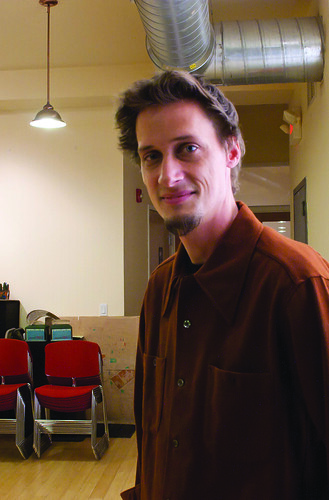
“Think” – that’s the word that appears on the front of the business card of the International Design Clinic, run by architecture professor Scott Shall. Through his own work with the organization and art education initiatives in Bolivia, thinking outside the box is exactly what Shall said he aspires to do. Shall shared his tools for constructing better futures with The Temple News.
The Temple News: What does your work in the field of architecture involve? What areas of study are you interested in?
Scott Shall: My work becomes a generator of new work in other peoples’ lives. I am looking at how architecture can be an iterative thing where small architecture might prompt the birth of new architecture.
I am not looking for the problem-solver-seeking-problems dynamic that places the architect as the hero and understates the problem. My research is focused on humanitarian design, and how architects can behave responsibly within places, [such as] slums and refugee camps.
TTN: How have you applied this philosophy in the real world?
SS: I do this with my current work in Bolivia. There are quite a few kids there who help their families make ends meet by working on the street. They don’t really have time to go to school long enough to learn more than the basics, and so they follow in their fathers’ footsteps. It’s a cycle.
There is a group in Bolivia called Espacio Cultural Creativo that every Saturday unrolls mats on the street and creates a school of the arts for three hours for these kids. My not-for-profit organization, the [IDC], now works with them. We plan on using all the forms of architecture [ranging] between a mat on the floor and a traditional schoolhouse structure to educate the children.
TTN: What are these forms of architecture you will be using?
SS: We start with extra-small forms and are hoping to go all the way up to extra large, which would be an actual established building. Right now, we are creating extra-small architecture, which are these little postcards. The postcards have short art lessons printed on them.
We have a series on photography, on writing skills and how to identify a protagonist and an antagonist in a story. We are also working on five to seven larger boxes to teach lessons. One has different percussive instruments attached to the sides for students to learn to play on. Another comes with chalk and paint so that the entire street becomes a giant palette essentially. We’ve mapped out the whole city and at every street corner set up one of these little schools. We stay there until the kids no longer want us.
TTN: Why art education?
SS: I think that the acquisition of knowledge is important, but I think the creative re-application of knowledge is more important. The few kids in Bolivia that are able to do more with their lives do so because they think outside the box.
I believe that the arts and the creative re-application of what they already know could help these kids. We are there to develop thinking. Maybe through the arts this pool of knowledge can be wielded differently, and opportunities can come.
TTN: Tell me more about your not-for-profit.
SS: I started the [IDC] in 2006. Today we are working on the project in Bolivia. We are also working with Bodine William W. High School in Philadelphia in order to create a roof canopy and seating for outside learning, all with common chain link fence materials.
We are an army of volunteers. No one is getting paid so we have to have a belief in our work. Today I have more volunteers than I can use so the question now is, how do I find the financial support to allow those volunteers to have a bigger impact?
Amy Stansbury can be reached at amy.stansbury@temple.edu.



Be the first to comment